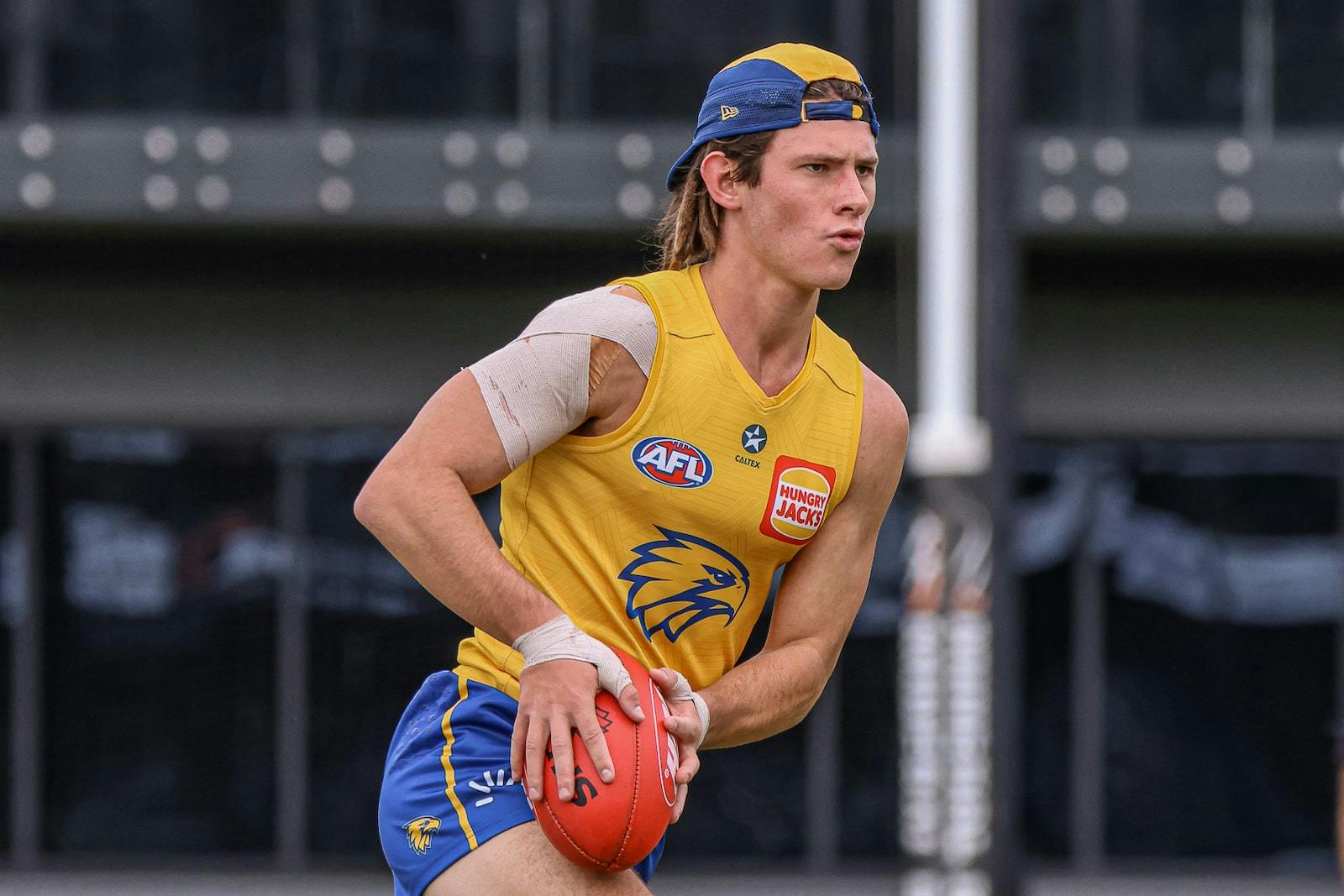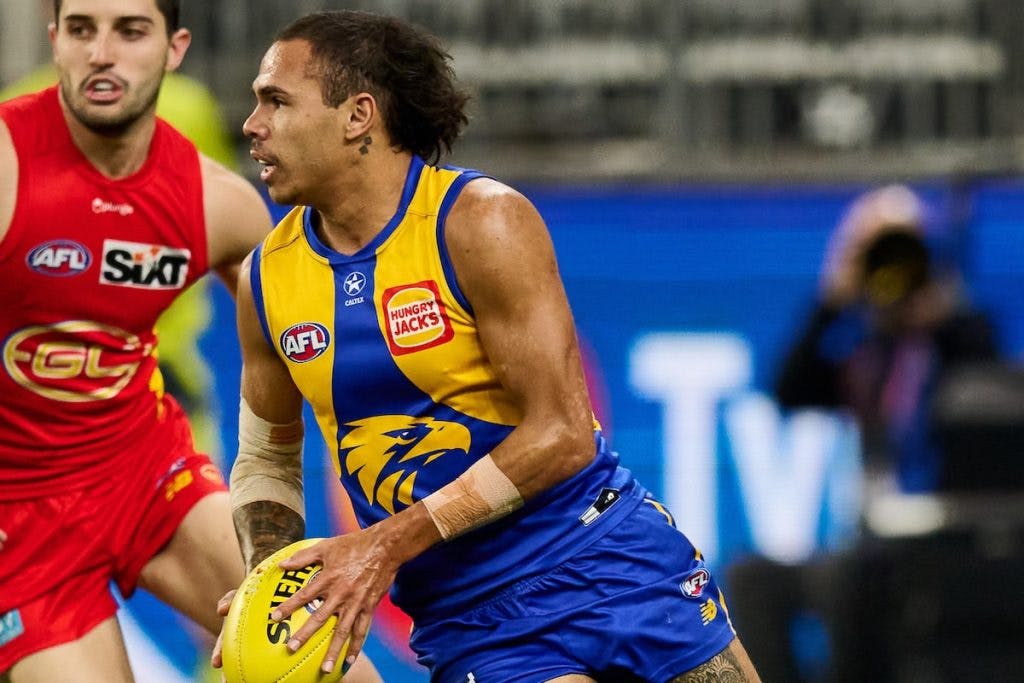A guide to this year’s 2023 AFL Mid-Season Rookie Draft

West Coast have the first overall pick in the AFL’s Mid-Season Rookie Draft which takes place on Wednesday 5pm WST. Sadly, this doesn’t mean salvation after a rough period for the Eagles.
In the short history of the Mid-Season Draft there’s very few examples of any players who’ve come in and made a substantial instant impact.
While there’s no quick fixes for the Eagles, the Mid-Season Draft does offer the chance to start stock-piling some future talent, which is needed given their plight having lost a club-record nine games in a row on average by 64.5 points, including two 100-point routs.
How does the Mid-Season Draft work?
The Mid-Season Draft is a relatively new concept, even though it existed briefly in the early 1990s, re-introduced in 2019 with a view to another pathway for budding AFL players but also aiming to help the struggling clubs.
It attempts to mitigate the impact on clubs when players retire mid-season or suffer season-ending injuries.
As per the annual National Draft (which happens around November), the sides at the bottom of the ladder get the best picks, as the draft order is determined by reverse ladder order as of the conclusion of Round 11. Typically clubs use either one, two or zero picks. It’s not mandatory. Given West Coast are adrift in last right now, they get pick one, like they did last year when they added the dreadlocked Charcoal Chicken worker Jai Culley (pictured above), who you may remember got a Rising Star nomination a month ago before – cue injury curse – doing his ACL a few weeks later.
Coincidentally, Culley’s season-ending ACL injury means he can be moved to West Coast’s inactive list this year, opening up a spot in their squad for them to utilise that top pick. Under AFL rules, club list sizes are capped at 44 players.
The Eagles are yet to decide if they’ll use a second pick, available to them if they move another player on to their inactive list, such as Jamaine (below) Jones who has a long-term ankle injury but was due in for surgery on Monday.

What’s the difference between the Mid-Season Draft and the other draft?
The difference between the Mid-Season Draft and the National Draft is the latter occurs after the season with clubs able to select the best available talent on the next age bracket, aka those who are at least 18 years old on December 31 in their first season on an AFL list.
Having first access to that next wave of age-specific talent sets the National Draft apart from the Mid-Season Draft in terms of quality. That wave of players is the cream of the crop in that age bracket.
You may have heard the term the ‘Harley Reid Cup’ last weekend when West Coast played Hawthorn, and that was in reference to the National Draft due to occur after the 2023 season, with Harley Reid – who turned 18 last month – rated the top prospect. Finishing last at the end of the regular season entitles you to pick one in that draft, hence the moniker on that game between the league’s bottom-two sides at the time.
In saying all that, there’s still been plenty of success stories out of the Mid-Season Draft since it was
introduced in 2019.
One of those was Richmond’s Marlion Pickett who you may recall debuted on Grand Final day in 2019 as the Tigers lifted the premiership and he booted his first-ever goal. He’d also previously been imprisoned in his late teens, so it was a remarkable story about someone getting a second chance in life. Other good Mid-Season Draft pickups have been Hawthorn’s Jai Newcombe and Collingwood’s John Noble.
So how does it work?
Most players who have nominated for the Mid-Season Draft come out of the state leagues, like the WAFL, SANFL, VFL or the Tasmanian State League, but there’s also teenagers who missed out in the 2022 AFL Draft who may be playing in the under-age Coates Talent League in Victoria too.
AFL clubs must have an available rookie list spot to participate in the Mid-Season Draft, which must be declared by 3pm WST Tuesday 30 May, just over 24 hours out from the Draft. Fremantle already have one spot vacant, so they can participate.
There’s no trade aspect to the Draft, so clubs cannot swap picks, nor can they exchange players. That only happens after the season. Given its mid-season, the event will be held remotely with the AFL operations at the ARC and clubs selecting their players online.
The players available in the Draft have the option to nominate their own terms, meaning clubs are required to commit to either six-month or 18-month contracts.
Who are the top prospects?
It’s understood around 320 players have nominated for the Mid-Season Draft, so there’s plenty for clubs to choose from, with Gippsland Power forward Ryan Maric widely seen as the top prospect. It’s unlikely West Coast will have a short-term lens with the No.1 pick but they may fancy 193cm Maric given their lack of tall forwards options on their list, especially with Jack Darling injured.
Subscribe to our free newsletter!
The teenager lost 20 kilograms in pre-season and has graduated from the Talent League to the VFL, playing for Hawthorn’s affiliate Box Hill Hawks, including booting two goals on Sunday. Eastern Ranges 204cm ruckman Clay Tucker, Box Hill Hawks winger Ethan Stanley and Northern Bullants defender Brandon Ryan, cousin of Freo’s Luke Ryan, will all be considered high. Former AFL players like ruckman Sam Naismith, WA mid Quinton Narkle and versatile tall Oscar McDonald have nominated too.
In terms of WAFL talent, Claremont’s 22-year-old forward/midfielder Jack Buller is likely to get picked up, while Subiaco’s Robert Hansen Jnr and East Perth’s Angus Schumacher are in the mix.
Fremantle may look to local talent, with the club armed with pick 10 (although that may fall if clubs above them don’t open up a list spot).
Draft order
Pick 1: West Coast
Pick 2: North Melbourne
Pick 3: Hawthorn
Pick 4: Richmond
Pick 5: GWS
Pick 6: Carlton
Pick 7: Gold Coast
Pick 8: Sydney
Pick 9: Geelong
Pick 10: Fremantle
Pick 11: Essendon
Pick 12: Adelaide
Pick 13: Western Bulldogs
Pick 14: St Kilda
Pick 15: Melbourne
Pick 16: Brisbane Lions
Pick 17: Port Adelaide
Pick 18: Collingwood
Image Credit: West Coast Eagles